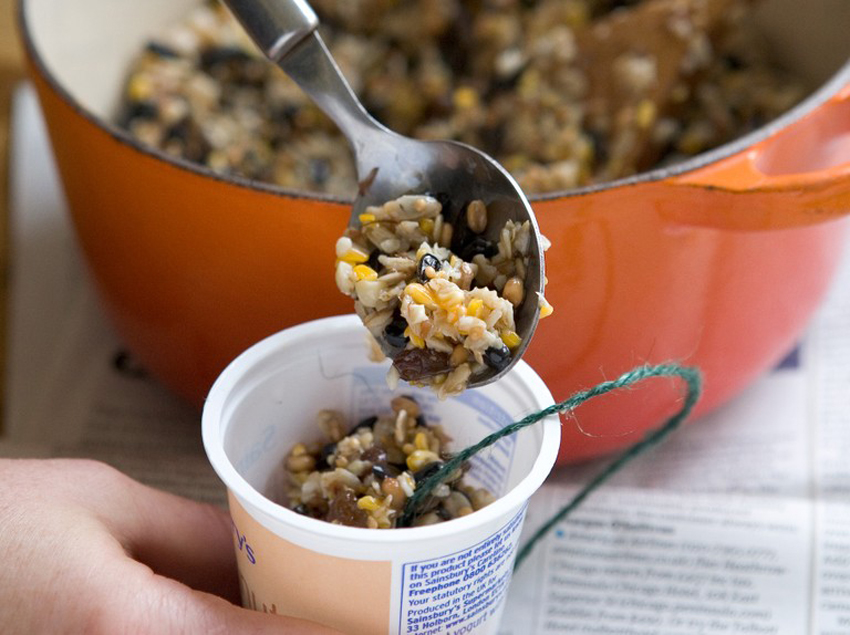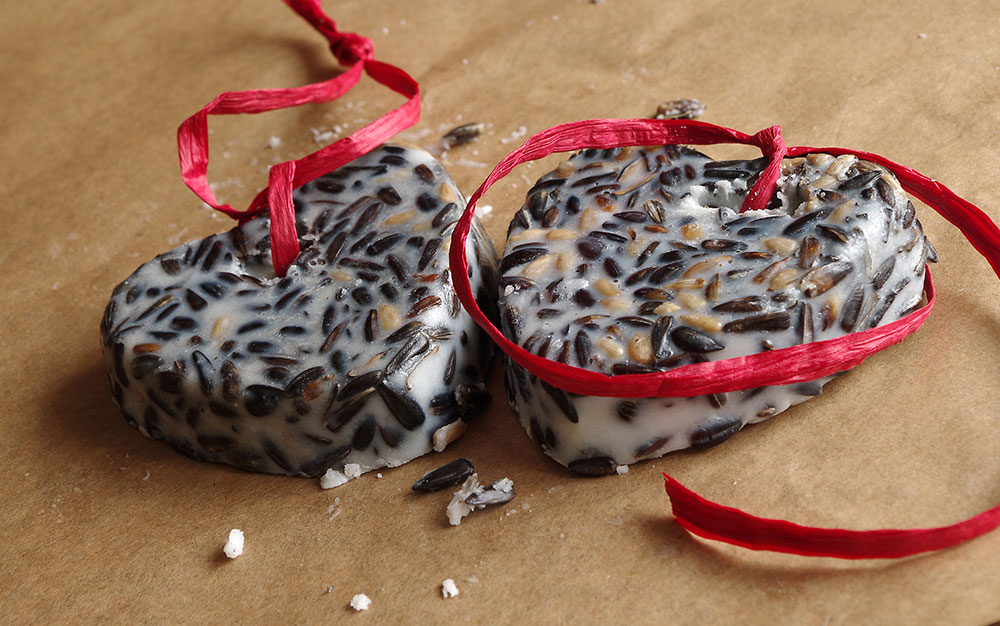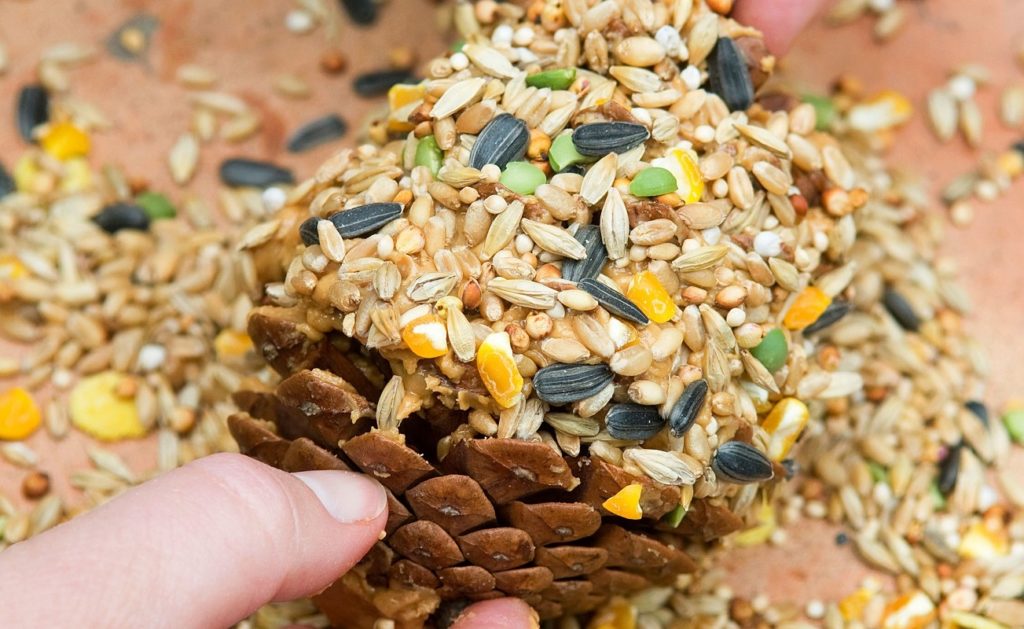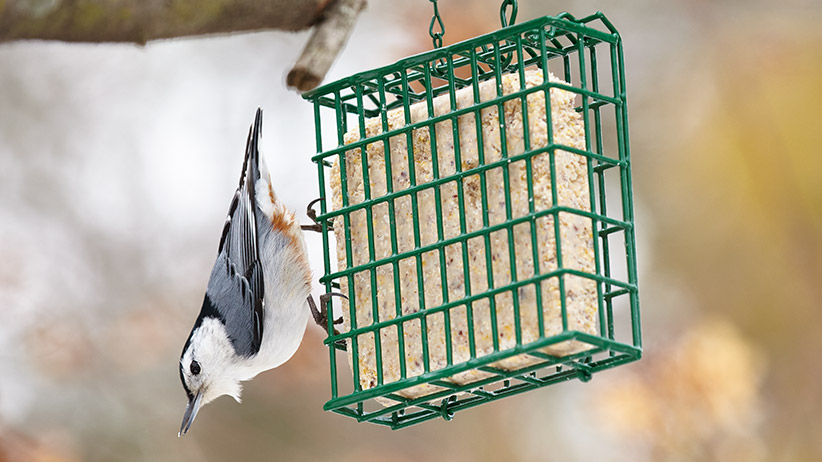We absolutely love our feathered friends, don’t we? Whether you have one in your home or more than one visiting your garden, having birds around makes for a lovely distraction and an excuse to make some great snacks.
We’re so used to putting out bird seed and nuts in our feeders, but for some real fun, why not create your own treats? While many species of wild birds will welcome basic food on a bird feeder, there are a few things you can cook up that will keep them extremely happy and well-fed through the cold winter months.
So, how do you make your own bird food? It’s actually more straightforward than you’d think.
You can whip up a batch in less than an hour, and you’ll have the best treats for your birds. The key is to consider both the nutritional value and flavour of your mix.
We’ve put together this guide with everything you need to know about how to make bird food — including how long it takes, what ingredients you’ll need and why they’re important, and what each step entails.
Some Beginners Tips
You’ll first want to think about how you want your treats to look and taste. You can use many different types of seeds, fruits and vegetables that are healthy for your bird.
- Start small: the more you add to the mix, the more expensive it will be (i.e. you’ll need more feed ingredients).
- Choose a mix with the least amount of fat: if your birds can eat a lot of protein, you can use less fat and still have healthy treats.
- Have fun: it’s really not that difficult to make bird food, so try to enjoy yourself in the process.
- Give your birds some options: like humans, birds are picky about what they consume. You’ll want to offer your birds a variety of textures and flavours so that you can entice them to eat. Birds will be more likely to eat healthy foods if there’s something tasty in the mix.
Something About Ingredients

Here are some considerations for what ingredients you’ll most likely use:
- Fat content: birds need fat in their diet, but too much will cause them to get tubby and possibly make them ill.
- Fibre content: birds need a lot of fibre in their diet for digestive health, but too much will cause them to get constipated.
- Protein content: birds need protein, especially if they’re not getting enough of it in the wild. Baby birds don’t consume as much protein as adults, so they need a lot more protein than an adult bird.
- Vitamin content: there isn’t much supplementing you can do to help with vitamin content, but the food you create should still contain more than pure seeds and nuts.
How To Make Fat Balls For Birds

Wild birds love fat balls. Period. And having a bird feeder in your garden with some yummy fat cakes throughout the winter months is an excellent way to keep our feathered friends visiting time after time.
Making any homemade bird food recipe can be great fun for adults and kids alike. Also, it’s incredibly fulfilling when you know the ingredients you’re using are organic and free of pesticides and other chemicals that may be found in on-the-shelf products.
So, if you fancy having a go, here are two easy recipes for making fat balls for birds (also known as suet cakes) whose ingredients are readily available at grocery stores:
Cajun Boil Coatings
- 1 cup lard (or suet)
- 2 ¼ t. cayenne pepper
- 1 t. paprika
- 1 t. garlic powder
- 1 t. cumin
- 1 t. grated cheese
- 1 t. onion powder (about 1/8 tsp)
Mix all ingredients together and store in a jar with a tight lid. Use as needed as a coating for your bird seed, to absorb moisture from wet seeds, or just an incentive to feast.
When you need it, just melt it in the microwave for about 50-60 seconds on high power and then stir it into your bird seed for instant feasting.
The Cajun Boil Coatings can be refrigerated for storage when not being used. You can use a small bowl for each cake, but I find that yoghurt pots work best. The fat balls will harden once they are cooled and stirred into the bird seed mix.
Sweet Dessert Boil Coatings
- 1 cup lard (or vegetable suet)
- 2 ½ t. peppermint extract
- 1 t. vanilla extract
As with the above bird fat ball recipe, when you need it, melt in the microwave for about 50-60 seconds on high power and then stir the soft mixture into your bird’s seed. They will harden into fat balls once they have cooled and stirred into your bird seed mix, ready for the feeder.
The Sweet Dessert Coating fat balls can be refrigerated when not being used.
Both of these delicious wild bird food recipes can each be doubled, tripled or quadrupled if you wish to make larger amounts at a time.
Delicious DIY Bird Food Recipes

There are many different ways to make your own bird food. Most are easy and don’t cost a great deal. While some are healthier than others, they’re all highly nutritious and will keep hungry birds coming to your garden feeders time after time. Here are some of my favourites:
Banana Chips and Peanut Butter
Many wild birds love to eat peanuts. They often shell them themselves, which is a great enrichment activity for them! This is one of my favourites because it’s easy to make and fun to snip up.
Cut bananas into quarters, dip in peanut butter (or other spread), roll in oats or cornflake crumbs and place on a baking sheet lined with baking paper. Bake at 350 degrees for 15-20 minutes, or until crispy and lightly browned.
Banana Chips and Sunflower Seeds
This is similar to the above but with a different spread. Slice bananas into quarters (skin on), dip in sunflower seed butter (or other spread), roll in sugar/salt mixture and place on a baking sheet lined with baking paper. Bake at 350 degrees for 15-20 minutes, or until crispy and lightly browned. Let cool, then store in an airtight container.
Fruit Leather (Pears)
Pears are a nutritional powerhouse and are often overlooked by many birds. They contain vitamin C, fibre and potassium, along with thiamin, riboflavin, niacin, zinc and iron.
In addition to that, they’re also delicious! To make fruit leather from pears: Cut peeled pears into small chunks and place them in a blender or food processor along with agave nectar (or another sweetener of your choice). Process until smooth.
Spread the mixture evenly on a rimmed baking sheet lined with baking paper (this will help you roll it later). Bake at 300 degrees for approximately 40 minutes, or until browned and soft.
Peanut Butter and Rolled Oats
A really simple recipe that works great in little bird feeders! Spread peanut mix onto a cookie sheet lined with baking paper, roll oats into balls and place on the cookie sheet. Bake at 300 degrees for approximately 40-50 minutes, or until lightly browned.
Toasted Sunflower Seeds
Another super tasty recipe that works great in garden bird feeders. Preheat the oven to 300 degrees, spread sunflower seeds on a rimmed baking sheet lined with baking paper and bake for 20 minutes (stirring once about halfway through).
What Ingredients Do You Need For a Bird Feeder?

Whether your bird feeder is hanging from a tree at the end of your garden or by your kitchen window, below are some great foods for attracting birds.
Seeds & Fruit
A tasty recipe for finches that’s simple to make and fun to use! Especially popular in the UK with the chaffinch, mix various seeds (such as flax, sesame, or sunflower) with dried fruits (such as apricots, raisins or apples). When using dried fruits, cut them into small pieces. As for currants and sultanas, remember to soak overnight before using them.
Crushed Corn & Fruit
If you have a feeder in your garden that smaller birds could tip over, this mix is excellent for them! Combine corn (either whole or crushed) with raisins, pine nuts and other chopped dried fruit.
Nuts, Seeds & Fruit
This is an irresistible idea for finches that like to feed on peanuts and bird seed. Simply mix them with fruit (like apricot halves or sliced strawberries) before placing them on the feeder. Roll the mixture into balls.
Nuts, Seeds & Corn
This is an excellent recipe for many different wild birds. Most common backyard birds will love it, and so will squirrels. Simply combine your favourite nuts and seeds with corn (either whole or crushed).
Crushed Seeds & Fruit
Combine various bird seed (such as sunflower, pumpkin, sesame or flax) with other chopped dried fruit that you have on hand. Crush with a rolling pin or with a mortar and pestle.
Additional Resources
Sources and References
- Make a Speedy Bird Cake – rspb.org.uk
- How To Make Fat Cakes For Birds – nationaltrust.org.uk
Sam loves to learn about animals and their habitats. He has been a nature lover from a very young age, and has been writing papers and articles about wildlife for as long as he can remember.

I’ve been making squares and fatballs from lard and birds seed; they seem to go soft and mushy very quickly, after about 4 hours..is there nothing I can add to keep them solid?
Your homemade birdseed squares and fat balls may be going soft and mushy due to the ambient temperature, especially during warm or humid weather. Lard will soften at warmer temperatures and is prone to melt or go soft. To maintain the consistency of your bird treats, you can try the following tips:
Use Suet Instead of Lard: Suet is a hard white animal fat and is usually more solid than lard. It’s a great energy source for birds and holds its shape better.
Mix in Gelatine: Unflavoured gelatine can help the mixture to set and stay solid, even when the temperature rises.
Add in More Seeds or Nuts: By increasing the ratio of seeds or nuts to fat, the squares or balls will have more structural integrity and will be less likely to go soft.
Freeze Them: If you aren’t planning to use them right away, freezing your squares or fat balls can help them to maintain their structure until you’re ready to use them.
Hope this helps 🙂